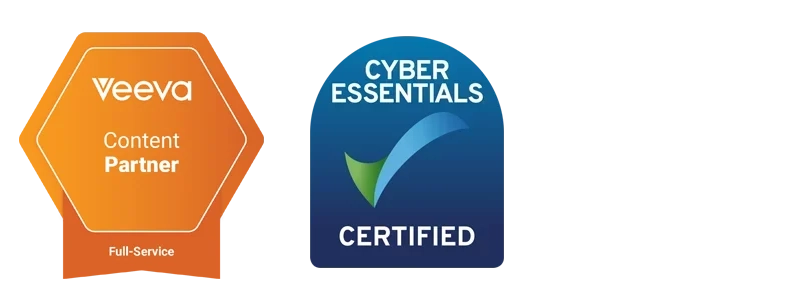
5 ways Market Access can benefit from deploying Budget Impact Models via Veeva
Veeva has quickly established itself as the industry standard CRM platform for the Pharmaceutical sector, and following its acquisition of the popular Zinc Ahead content compliance business in 2015, Veeva now offers the combined benefits of CRM and Closed Loop Marketing (CLM), as well as the robust content compliance features brought through ZINC now delivered via Veeva Vault PromoMats.
While ZINC has been the trusted content compliance system for many in our regulatory-sensitive industry, the use of Veeva by Market Access teams remains limited. Already established as a platform for managing the static digital, print or PDF materials typically developed by marketing teams, among market access teams Veeva is perceived as being unsuitable for the dynamic, data-driven HEOR apps and Budget Impact Models (BIMs) developed to justify and support a reimbursement decision.
Not true. Not only is it now possible to deploy complex Market Access content such as BIMs and Health Economic apps via Veeva, there are compelling reasons why such valuable content should be deployed via Veeva to finally achieve the promise of integrated CLM.
1. Seamlessly integrate Market Access and Commercial activities
Arguably, the opportunity to present a budget impact model to a healthcare prescriber or payer represents the very pinnacle of sales and marketing efforts for Pharma, often seen as a final step before contracting and prescribing your product to patients. Time invested pouring over a model demonstrates genuine interest in your product, as they seek to discover what impact your product might yield in an individual healthcare setting.
Yet, all too often, commercial and Market Access teams fail to integrate their efforts, “passing the baton” between teams rather than achieving a single siloed overview. Closed Loop Marketing (CLM) is not new to market access teams, but to date integrating CLM data-points from BIMs back into an organisations’ CRM system have been expensive, inflexible and ineffective. Expensive because an entire layer of programming typically needs to be incorporated into standalone BIM apps to permit 2-way communication with CRM servers; inflexible because changing data-points often means re-programming the model to accommodate such changes; and ineffective because without true integration of systems, the interpretation and use of the data is always going to be limited.
By deploying BIMs via Veeva, seamless integration of commercial and market access efforts can be achieved in an environment familiar to commercial teams. Timelines of interaction with clients, interest areas captured via marketing automation systems, and prescribing history are all presented alongside the information captured from BIMs. Rather than market access being a separate operation, deploying BIMs via Veeva means market access becomes an integral part of commercial efforts.
2. Verify value claims, and quickly react to payer / prescriber feedback
The development of any BIM is typically preceded by appropriate stakeholder research, competitive landscaping and message development. Such pre-build work is meant to ensure that the resulting model presents value messages and results that resonate with the challenges faced by that healthcare setting, be that adverse events avoided, improved patient outcomes, or simply a clear financial gain. But these assumptions are not truly tested until a model is presented live in front of a payer/prescriber. Only then will the months of research and carefully crafted models be put to the test.
Feedback can therefore be hugely beneficial to the market access team, confirming the model and value proposition are received well. But the advantages can go much deeper than this. Cross referencing this data with different audience roles, different territories or following the arrival of a new competitive treatment, all mean that model assumptions and messages can be validated against the changing environment and, if necessary, adjusted to react to changes or unexpected objections.
And this approach is a hit with commercial teams, too, helping to instil confidence in a BIM, keeping it relevant and trusted as the go-to tool, and helping to confirm market access as a valued extension to the overall commercial effort.
3. Demonstrate a Return On Investment of BIMs to internal stakeholders
The complexity and science of market access is often poorly understood outside of the department. Recording CLM data to demonstrate usage is not new, but by integrating BIMs into the wider ecosystem of Veeva, market access can clearly demonstrate the impact of the model in the real world.
This might include determining correlations between BIM usage and commercial deals won, identifying the most effective users of BIMs in any given ecosystem and replicating their experience, or territory penetration and BIM message/focus. Having the tool within Veeva opens up the power of its report generation functions to enable insights not previous possible.
4. Avoid the headache of multiple distribution platforms
To date, deploying standalone digital BIMs on devices like iPad or other mobile devices has been achieved by proprietary mobile device management (MDM) systems. However, the use of multiple systems (one for market access and one for marketing) presents an administrative and maintenance burden to users and IT teams alike.
Approving, updating and revoking BIM versions and users via an additional third party system carries not only an administrative burden, but introduces the risk of human error because it requires the manual management of materials and users across 2 systems . An advantage of one centralised system like Veeva is how user privileges can be globally controlled, e.g. a deleted user is deleted from all access.
Such global software also means on-going support, commitment throughout the organisation, and centralised investment rather than requiring an additional investment because market access is “special”.
Like other MDM systems, versions and users can be approved, updated and revoked within Veeva. Unlike other MDM systems, utilising Veeva means no additional administrative or cost overhead, and reduces the chances of human error.
5. Benefit from the investment in a single company-wide compliance system for all customer facing materials
With content compliance being such an important issue in pharma, the risks of non-compliance are significant. As with MDM systems, the use of third party compliance control brings with it administrative burden, additional cost and the risk of human error.
The acquisition of Zinc Ahead by Veeva systems in 2015, and Veeva’s subsequent announcement that Zinc will not be supported beyond 2020 has brought the issue fore. For those organisations already deploying Veeva, the transition is straight forward, especially for the “static” materials developed by marketing teams such as web sites, print or PDF materials. But now that market access teams can also use Veeva for the dynamic, interactive HEOR and budget impact models, there is no need to fund, administer and maintain separate, propriety software
About Mtech Access
Mtech Access is an experienced and trusted MA, HEOR and Value Communication agency serving the healthcare sector. It utilizes its industry knowledge and its design and technical expertise to develop powerful value communication tools to engage the various stakeholders and decision makers in healthcare systems around the world.
A full Veeva Agency Partner, it has developed a proven solution to integrate complex, dynamic models such as BIMs into Veeva for major Pharma organisations, bringing MA teams the full benefits of Veeva’s approval, compliance, distribution and CLM features to industry leading dynamic BIM visualisations across multiple mobile platforms.
With Health Economics, Value Communication, Digital programming, Design and Veeva know-how all in-house, projects are managed from a single point of contact, removing the burden of project management, to-ing and fro-ing between disparate teams, contracting with multiple suppliers, and poor clarity over project responsibility.
Read more at https://mtechaccess.co.uk/all-services/veeva-partnership/


